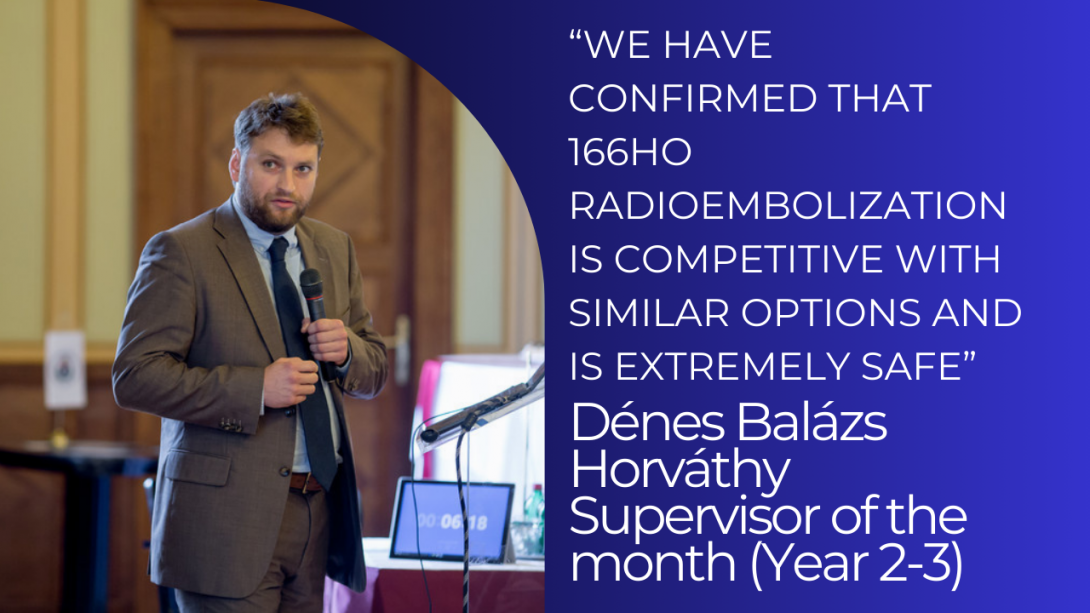
He works at the Department of Interventional Radiology, Semmelweis University, and in addition to his clinical duties, he supervises four Ph.D. students at the Center for Translational Medicine. One of them recently published a study in the journal Cancers, which demonstrates the effectiveness of their joint work. In May, Dénes Balázs Horváthy was named Supervisor of the Month (Year 2/3) at the CTM.
Dr. Horváthy joined CTM's Ph.D. program as a supervisor last academic year, meaning that his first Ph.D. students have just completed their second year in the training. One of them is Petra Sólymos, who investigated the safety and efficacy of 166Ho radioembolization in patients with liver tumors. Her meta-analysis on this topic was recently published in Cancers. “Petra made excellent progress with her research, and we soon realized that her results would be fascinating. Transarterial radioembolization with Holmium-166 microspheres is an innovative, potentially curative locoregional treatment option that delivers targeted radiation directly to liver tumors. Our meta-analysis revealed that this treatment is competitive with similar options and is extremely safe. Its side effects are minimal, and its effectiveness is comparable to that of yttrium isotopes, which have long been used in interventional radiology. The holmium isotope is better than this because it has several technical advantages. For example, it has paramagnetic properties, allowing it to be visualized not only by CT, but also by MRI, which enables more accurate dosimetry. This is extremely important in precision procedures. 166Ho radioembolization is also being tried on other types of tumors. It is used, for example, in glioblastoma, and may also be useful in kidney tumors.”
Dr. Sólymos' second project is also related to radioembolization and liver tumors. It is based on the fact that the radioembolization program was launched three years ago at Semmelweis University, and since then, this highly advanced treatment has been used on nearly one hundred patients. “Petra plans to process survival data and treatment efficacy data for patients receiving this type of treatment. She intends to establish a transarterial radioembolization registry for the treatment of liver tumors. She has just started working on this project.”
Dr. Horváthy's other second-year Ph.D. student is Mátyás Rédei, who is also making good progress with his research. “He investigates the safety and effectiveness of navigational systems for patients undergoing CT-guided intervention. This highly advanced interventional radiology technique enables a wide range of procedures that were previously impossible to perform. Therefore, it is essential to clarify its effectiveness and safety. Our manuscript on this research has just been completed, and it shows that using navigation systems significantly helps CT-guided interventions.”
Dr. Horváthy has two other Ph.D. students who have just completed their first year at CTM as MD-Ph.D. students. One of them is Alexandra Ádám, who investigates the effect of radiation lobectomy in patients with liver tumors. The other MD-Ph.D. student is Shahar Adar, who evaluates the efficacy and safety of radiotherapy, surgical resection, and lung ablation in the treatment of patients with early-stage cell lung cancer.
(Szabó Emese)